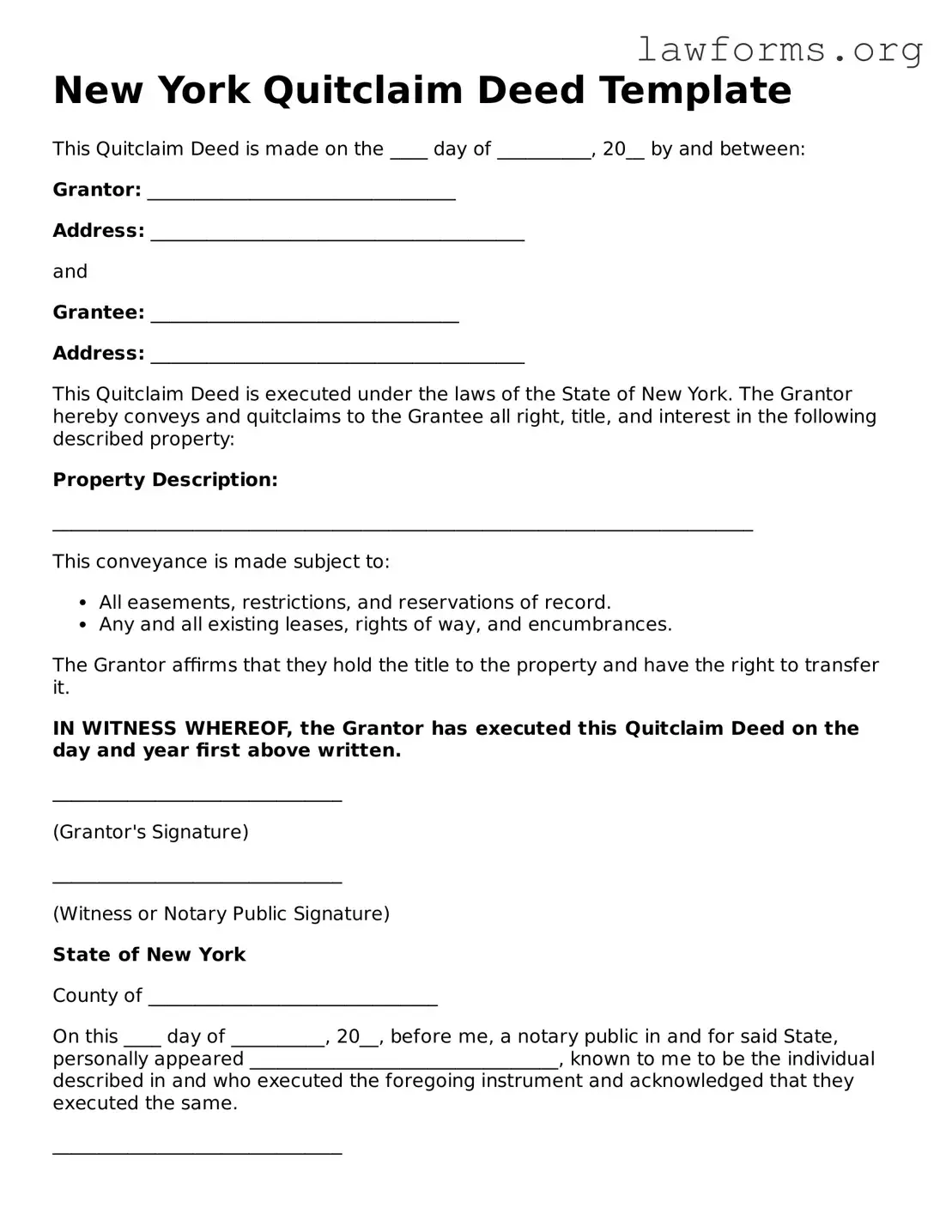New York Quitclaim Deed Template
This Quitclaim Deed is made on the ____ day of __________, 20__ by and between:
Grantor: _________________________________
Address: ________________________________________
and
Grantee: _________________________________
Address: ________________________________________
This Quitclaim Deed is executed under the laws of the State of New York. The Grantor hereby conveys and quitclaims to the Grantee all right, title, and interest in the following described property:
Property Description:
___________________________________________________________________________
This conveyance is made subject to:
- All easements, restrictions, and reservations of record.
- Any and all existing leases, rights of way, and encumbrances.
The Grantor affirms that they hold the title to the property and have the right to transfer it.
IN WITNESS WHEREOF, the Grantor has executed this Quitclaim Deed on the day and year first above written.
_______________________________
(Grantor's Signature)
_______________________________
(Witness or Notary Public Signature)
State of New York
County of _______________________________
On this ____ day of __________, 20__, before me, a notary public in and for said State, personally appeared _________________________________, known to me to be the individual described in and who executed the foregoing instrument and acknowledged that they executed the same.
_______________________________
(Notary Public Signature)
My Commission Expires: _______________
